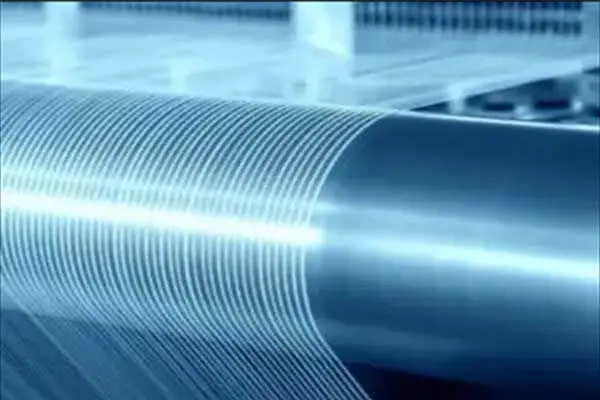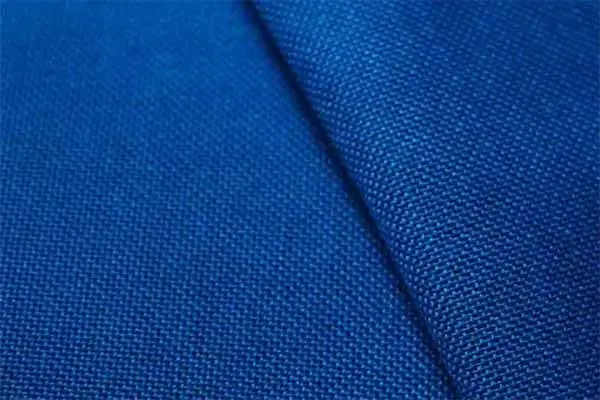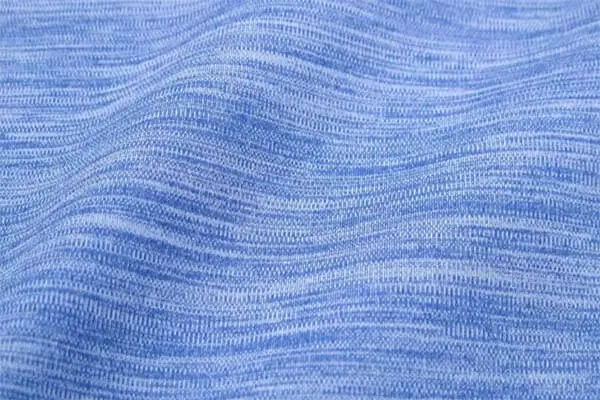Nylon and polyester fabrics are widely used all over the world. They are now part and parcel of our life. In every sphere of our life, nylon, and polyester are so much involved that even though we want to get rid of them, we truly cannot. You are using an umbrella that is made of polyester. Walking on a carpet? Think what it is made of! Using sportswear? All of them are made of either nylon or polyester. Well, do you know the differences between nylon and polyester fabrics? If not, don’t worry, I will cover everything in detail about the differences between polyester and nylon fabrics in almost every angle. Just stay with me.
Nylon vs Polyester
Nylon or polyester, or nylon vs polyester is a very common question amongst those who have considered the advantages and attributes of both. Do you know why? Because they actually don’t know anything about it. However, before going into deep analysis, one must know what nylon fabric is and what polyester is as well. Now if you already know about the properties, construction materials, characteristics, and many more, I think you are now ready to join to analyze the facts between those two fabrics’ ins and outs.
If you want to make any heavy-duty backpacks like tool bags for electricians with polyester fabric, it would be great. Cotton or silk won’t work here because they are not as durable as polyester or nylon.
History of Nylon and Polyester
As we are going to find the differences between nylon and polyester fabrics, let’s start with their history. How it was first introduced is also important.
Nylon was first invented in 1931 by an organic chemist named Wallace H. Carothers who followed the original patent of DuPont. It was then experimented and manufactured after a long period of research. However, later on, based on some research, a new fiber was able to be created which contributed to replacing silk. After this, the American company, DuPont, started manufacturing nylon and officially brought it to the public at the New York World’s Fair in 1939. From then on, Nylon is on the go.
Now Polyester. Based on research in 1926 by E. I DuPont de Nemours and Co. some brilliant chemists researched in 1939-41 and it was successful. The polyester fiber was created known in England as Terylene. In 1946 DuPont purchased the right to manufacture polyester fiber in the U.S. and they started marketing the fiber in 1951.
Construction and Composition of Nylon and Polyester
Nylon and polyester have no gulf differences in construction and even in composition. A very slight difference in the processing time. They are almost the same.
Both nylon and polyester are plastic compounds and are derived from natural fossil Petroleum. These two fabrics are synthetically created in virtually the same way.

The life begins with nylon and polyester fabric as small plastic pellets which are the size of a corn kernel. After heating and stretching out these little pellets are then joined together to make long fibrous strands. These fiber strands are combined and bonded to have an actual thread that seems like cotton or silk yarn. Though they look like cotton thread in fact those are threads of plastic.
However, the thread is woven and knitted into much longer fabric rolls for various purposes. Interestingly, aside from the production protocol and processes being a bit different from one another, other general processes of producing these fibrous strands and plastic compounded threads are undoubtedly the same for both the polymers of nylon and polyester.

As said before nylon and polyester have no significant differences in manufacturing and process and composition. Now we need to see other differences in features, characteristics, advantages, disadvantages, and more.
Comparison Chart
Now, before jumping into the detailed discussion, how will it be if we make a comparison chart to have a better understanding? Let’s see it.
Differences between Nylon and Polyester Fabrics
| Features | Nylon | Polyester |
|---|---|---|
| Materials | Polymer production of coal, air, water, and petroleum products. | Polymer production of coal, air, water, petroleum products. |
| Manufacture | Created as a liquid, mechanically spun and dried into individual fibers. | Spun into the thread from the chemical solution. |
| First Made | First U.S. Commercial Nylon Fiber Production – 1939, DuPont Company. | First U.S. Commercial Nylon Fiber Production – 1953, DuPont Company. |
| Uses | Polyamide, is made from petroleum. | More widely used in all kinds of apparel. Carpets, drapes, and bedding. Some industrial use. |
| Cost | Expensive | Cheaper |
| Feel | Softer and smoother. | Drier and rougher. |
| Wearability | Low moisture absorbency | Wrinkle resistant |
| Dyeing and colorfastness | Absorbs dyestuff well. | Does not hold color well. Dyed nylon fades quicker than polyester in sunlight. |
| Durability | More common in certain kinds of apparel, including lingerie, tights, raincoats, and swimwear. Carpets, drapes, and bedding. More wide range of industrial uses. | Strong, resistant to stretching and shrinking, resistant to most chemicals, crisp and resilient wet or dry, abrasion-resistant. |
| Flammability | Nylon melts and then burns rapidly. | Polyester melts and burns at the same time. |
| Comfort | Exceptionally strong, abrasion-resistant, and resistant to damage from oil and many chemicals. | Quick-drying, light-weight, smooth. |
| Appearance | Shinier | duller |
| Environmental impact | Most nylon is made from unavoidable oil refinery byproducts and is non-disposable. | Non-biodegradable, but can be recycled in some cases- possible to purchase 100% recycled polyester. |
| Abrasion resistance | Perform worse. | Performs better. |
| Reaction to heat | Cannot be processed under high heat. | More durable in high heat. |
| Reaction to water | Water retention ratio: 4 Nylon absorbs more water than polyester. | Water retention ratio: 0.4. Polyester is hydrophobic and quick drying. |
| UV Resistance | Somewhat | Very |
| Styles | Blouses, dresses, foundation garments, hosiery, lingerie, underwear, raincoats, ski apparel, windbreakers, swimwear, cycle wear. | Every form of clothing. |
| Maintenance | Easy to wash, mildew resistant. | Easily washed, mildew resistant. |
| Cleaning | Easy to wash and mildew-resistant. Can be dried on a low heat cycle, but must be removed as soon as finished. Can be ironed. Cannot be dry-cleaned. | Easy to wash, mildew-resistant. Can be dried on a low heat cycle, but must be removed as soon as finished. Can be ironed. Can usually be dry-cleaned. |
| Allergic reactions | Possibly, more likely caused by finishing resins, fibers repel typical allergens. | Lightweight, warm, smooth, soft, quick-drying. |
| Worldwide Production | Around 3.9 million metric tons, 11% of synthetic fiber production. | Around 21 million metric tons, 58% of synthetic fiber production. |
Read the comparison chart already? What do you think? Told you they are almost similar. When you will study more about this specific topic, you will find more interesting information.
Nylon Vs. Polyester Fabric
The measure of the density of either nylon polyester or other fabrics is known as the denier (D, DEN). It is important to remember that the denier measurement denotes linear mass density. So denier can be determined its strength when we juxtapose it with the same type of material.
So, when nylon has a lower denier thickness than polyester does, it is inherently and undoubtedly stronger than polyester on a weight-for-weight basis. However, there can be many kinds of deniers like 400D, 420D, 500D, 600D, 1680D, 1800D, and many more.
Now, let’s compare the nylon and polyester fabric with other factors especially what we are in touch with within reality.
Feel
Softness, suppleness, and smoothness are the abstract things to feel about nylon and polyester fabric. Nylon was considered as the substitute for silk which means it is very soft and has a lustrous feel. But the polyester fabric was not as smooth as nylon and that is why it is used mostly in outerwear garments and suits. However, the manufacturing capabilities of today’s world have proved that polyester can be made softer in many ways as well. So now besides nylon, polyester introduces the softness of cotton.
Durability
After the smoothness of the fabric what comes to mind next is its durability. How much longer will nylon and polyester last? Well, both of the fabrics are very strong and lightweight due to their polymer-based construction. But if you have to choose one of them in terms of strength, undoubtedly, nylon is the stronger of the two fabrics with greater stretchability.
However, though polyester is not as strong as nylon it resists pilling better than nylon while it neither weakens the garment physically nor is attractive aesthetically.
Water-Wicking Ability
When it comes to water-wicking ability which leads to fast-drying fabrics between the two fabrics, polyester is a bit ahead of nylon. As we know, both fabrics are naturally hydrophobic which means they expel water to the surface of the garment where it will evaporate. In this case, as nylon absorbs some water, it takes a little longer for a wet garment to dry while the polyester doesn’t need to.
Easy Care
It is highly recommended that both the fabrics nylon and polyester be machine-washed and dried under heat. As we know polyester is not soft like nylon, it sometimes needs the addition of a fabric softener. However, nylon whites should be washed separately in order to avoid yellowing. And yes, while ironing, one should be very careful about setting the heat because they tend to melt at high temperatures.
Differences between Nylon and Polyester Fabric
While we are discussing the differences between nylon and polyester fabrics, the cost is one of the major factors. The manufacturing cost of nylon is higher than polyester. While the production cost is higher the buying price must be higher. However, the quality of the material must vary and will play an important role in their expense.
Then, comes the weather-resistant. Here nylon is more weather resistant than polyester as well. But nylon may fate faster than polyester. Another factor to consider is that nylon does not absorb moisture very well and that’s why it may wrinkle on quite easily while polyester is moisture resistant and does not wrinkle that much easier.
Speaking of flammable capacity, both the materials melt and burn at the same time. In this case, nylon melts first and then it burns. On the other hand, polyester melts and burns at the same time.
However, as the fabric nylon seems softer and smoother than polyester it all depends on the fabric composition and other criteria.
Nylon

Advantages of Nylon
- Highly elastic
- Durable and abrasion-resistant
- Resilient
- Water-resistant
- Mold and mildew-resistant
- Stain-resistant
- Easily cleaned
- Ideal for dog beds
Disadvantages of Nylon
- Fades easily in sunlight
- Environmentally unfriendly, not recyclable
- Overly shiny appearance
- May generate static electricity
So what do you think about nylon now? You already know the advantages and disadvantages of the nylon fabric by now. Let’s now see the merits and demerits of polyester fabric.
Polyester

Advantages of Polyester
- Very durable and abrasion-resistant
- Resists water, dries quickly
- Resists stretching and shrinking
- Mold and mildew-resistant
- Holds color well, resists fading
- Easy to clean, maybe dry-cleaned
- Most of them are recyclable
Disadvantages of Polyester
- Non-breathable
- Oils may stain
Which One is Stronger Nylon or Polyester?
It is undeniably true that nylon is stronger than polyester. So the trophy would settle for the nylon fabrics. Due to some processing and composition materials, nylon becomes powerful and durable while polyester, in this case, cannot compete with nylon at all. Polyester is durable too but not that much nylon is.
In terms of stretchability, nylon is too tough to damage easily because of its stretchy nature. Here both the fabrics are abrasion-resistant but nylon may be more so.
Nylon and polyester fabrics are used in different places. But nylon is preferred to use where much durability is needed. For family purposes, industrial use, sportswear, carpets, and hundreds of thousands of purposes nylon is used while polyester is used more especially in fashion uses.
Which One Is More Waterproof – Nylon or Polyester?
Nylon is winning in almost all of the categories but, in this case, polyester holds the trophy. The Polyester fabric has a moisture regain level of 0.4% while nylon registers a whopping 4%. That is why polyester becomes more hydrophobic than nylon.

In addition, stiffer competition always goes on the matter of waterproofing questions. The manufacturers treat it with waterproofing chemicals in order to resist water. Both of them can be able to prevent water from going in.
You may see tents are available made of nylon rather than polyester which doesn’t mean that nylon is more waterproof. Producers use nylon for making tents because of its durability and capacity to withstand any situation.
Nylon or Polyester – Which One Is More Breathable?
We know that any clothes the closer to the body the less it has the ability to breathe. In this case, nylon is less breathable because it hugs your body tightly while polyester doesn’t.
Yes, polyester can cling to your body but not as tight as nylon does. So, if you want to lose weight, you should wear nylon because it makes sweating more than if you wear polyester.
However, if both fabrics, polyester, and nylon, are lightweight enough, they both will breathe quite similarly.
Well, if you still debate about the breathability of the two fabrics, let’s say if nylon is breathable, polyester is more so. Nylon may be a very good fabric to wear especially in sportswear while polyester puts the contribution on other categories very well.
Which Fabric Dry Faster – Nylon or Polyester?
The direct answer to this question is polyester. Yes, you should use polyester fabric if you want to expect your clothes to dry faster so that you can attend your office or meeting. And why does that happen for polyester? Well, Polyester is made in a lightweight manner that will dry quicker than nylon will. Besides dyeing process is also responsible for this point.
Polyester vs Nylon – Which One Is Better for Sun Protection?

It is true that nylon is prone to fading very quickly especially if the wrong dye product is selected to put on that material. This fabric is neither good for keeping colors very well nor is perfect for having good UV resistance.
Otherwise, polyester has top-notch UV resistance and is capable of holding its color for a long duration. Polyester is really hard to dye but once it’s done, the color stays for a long time. All fabrics fade eventually but in comparison to the two fabrics, nylon fades faster than polyester.
Nylon vs Polyester Clothing
Each fabric has its own special features and unique characteristics. Both fabrics are made artificially and thus they are synthetic. This is why they can handle rough weather and situations with ease. Nylon is considered stronger, weather-resistant, and more durable than polyester. The polyester fabric would be great if you are going to attend social events.
Anyways, in most cases, nylon is seen to be used for outdoor clothing and gear. Polyester is great for making various dresses like pants, skirts, shirts, dresses, and so on.
Nylon is costlier than polyester and it is a factor too. You should choose the product you need to use depending on your purpose, occasion, and intention. So, you are the main subject here to choose the fabric you want. To know more about the differences between nylon and polyester fabrics, you can check other articles too.
So, Which One Is Better – Nylon or Polyester?
A very complicated question is which one is better between the two? First of all, both the fabrics are man-made and their constructions are almost similar. As in their construction, there are no organic substances they are synthetic. The differences between nylon and polyester fabrics are very little to find. However, we cannot make an indication of superior or inferior fabrics depending on just costs.
I would say, you should not worry much about which fabric you should wear or use. The most and best differences between nylon and polyester fabrics have been shown here and you must understand these two are not significantly different.
So what is the result? Tie. What, the result is a tie? Yes, you heard right. You cannot choose one over another because they are like twins.
What I say is choose the one you actually need. Both of them are great and they have good features. So leaving the debate and spinning thoughts behind, just pick the one you require. It will solve your problem.
Last Words
One of the most debated and controversial questions is which one is good or better nylon or polyester. As I have tried to elaborate on the main factors in my discussion and there is nothing to say. All the problems lie in our thoughts and adamant decisions. And this is why just pick a cloth or product you need and use it. Pick another one next time and you will understand the comparison. So, any questions about the differences between nylon and polyester fabrics? Well, you should not. If you insist now, you should read hundreds of articles on it.

